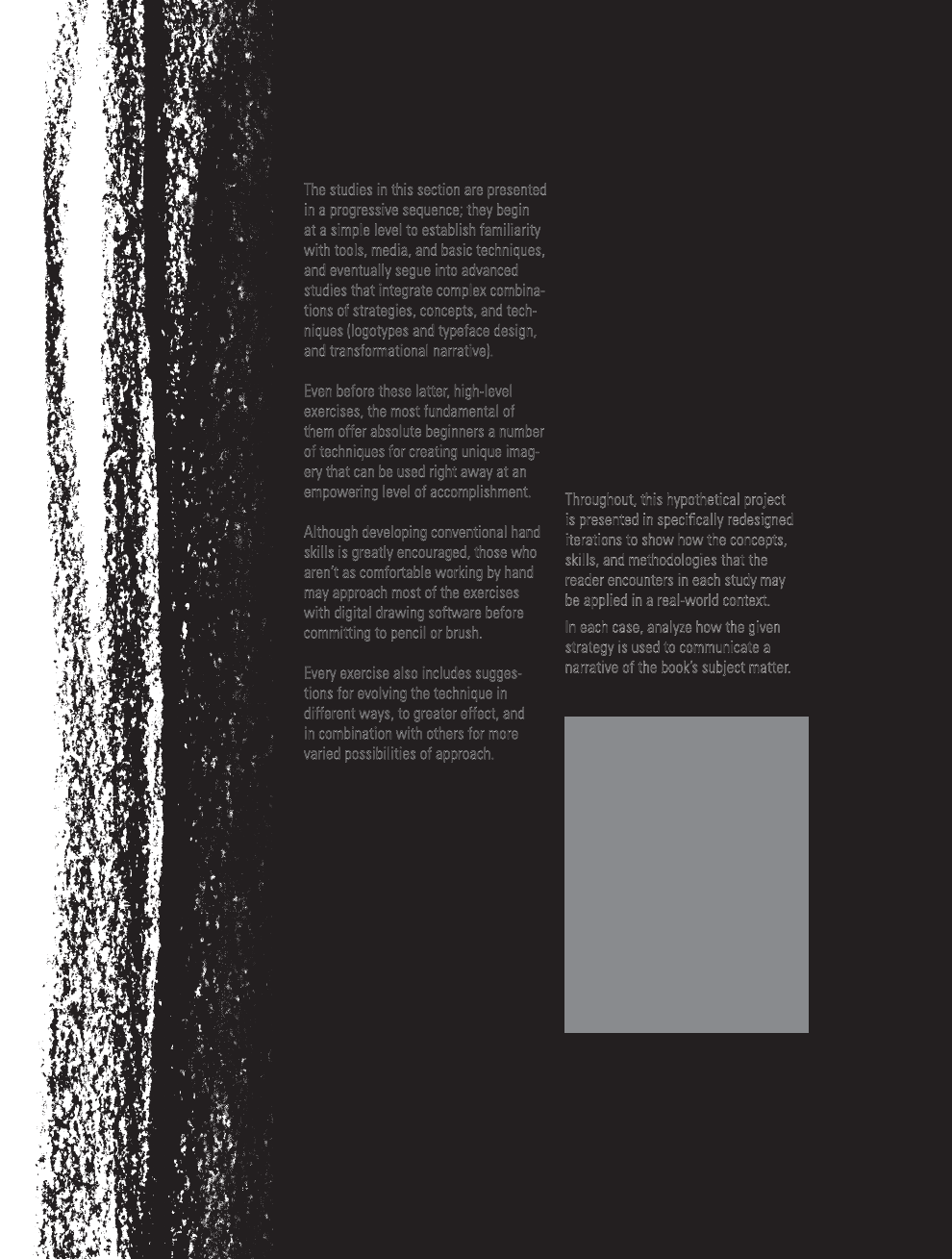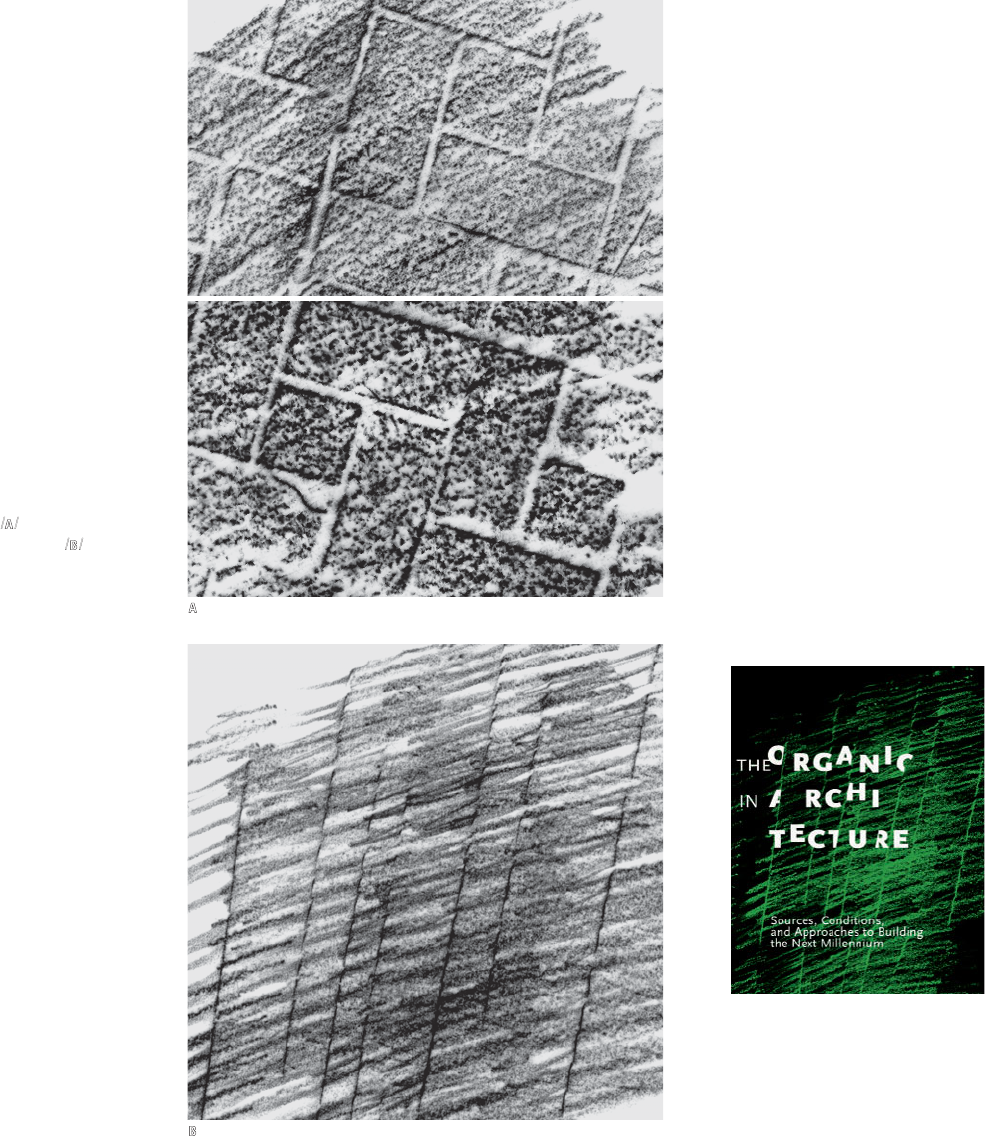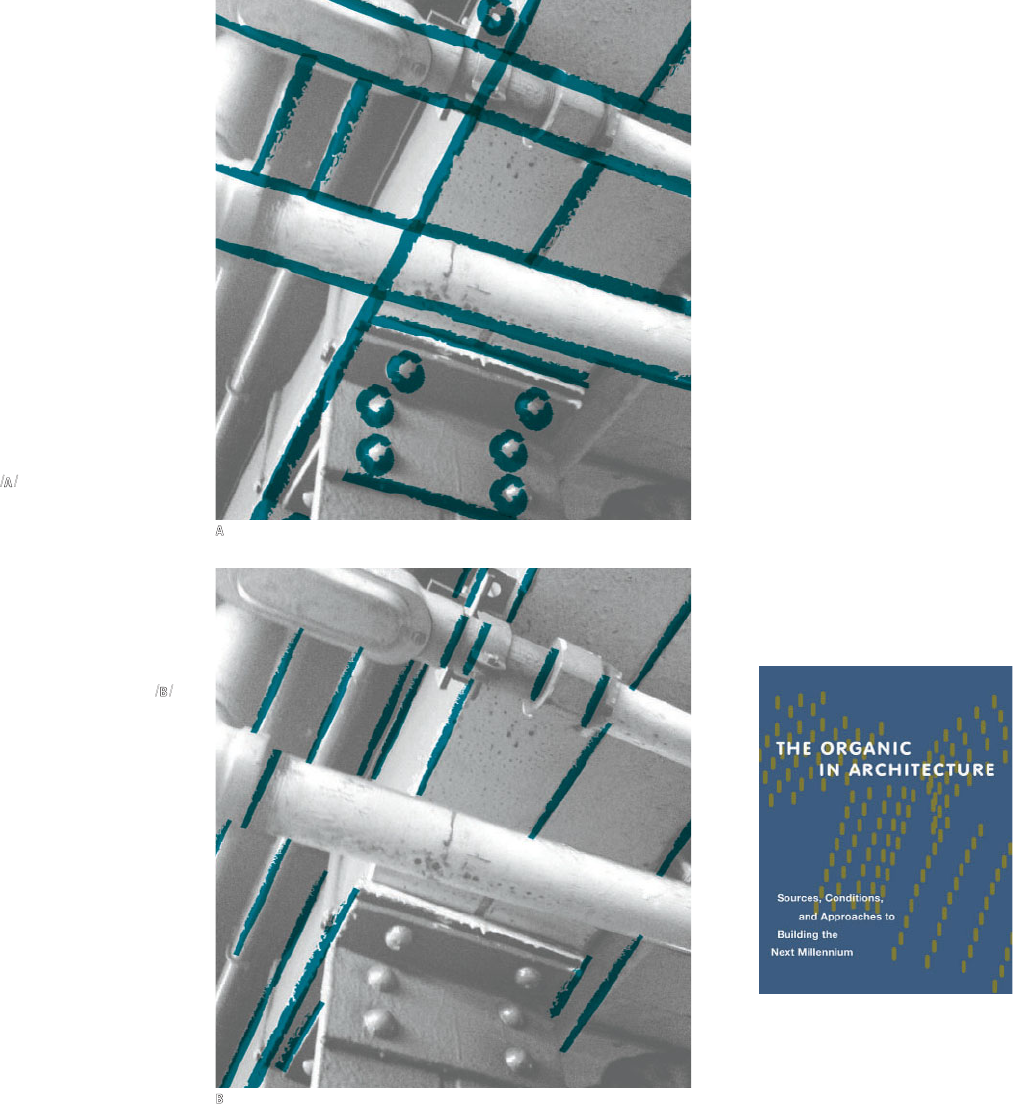
138
/
139
Ex/
er
cise
/s
Practical Example: Cover Design
Throughout, this hypothetical project
is presented in specifically redesigned
iterations to show how the concepts,
skills, and methodologies that the
reader encounters in each study may
be applied in a real-world context.
In each case, analyze how the given
strategy is used to communicate a
narrative of the book’s subject matter.
The studies in this section are presented
in a progressive sequence; they begin
at a simple level to establish familiarity
with tools, media, and basic techniques,
and eventually segue into advanced
studies that integrate complex combina-
tions of strategies, concepts, and tech-
niques (logotypes and typeface design,
and transformational narrative).
Even before these latter, high-level
exercises, the most fundamental of
them offer absolute beginners a number
of techniques for creating unique imag-
ery that can be used right away at an
empowering level of accomplishment.
Although developing conventional hand
skills is greatly encouraged, those who
aren’t as comfortable working by hand
may approach most of the exercises
with digital drawing software before
committing to pencil or brush.
Every exercise also includes sugges-
tions for evolving the technique in
different ways, to greater effect, and
in combination with others for more
varied possibilities of approach.
The Organic
in Architecture:
Sources,
Conditions, and
Approaches
to Building the
Next Millennium

Drawing
/ for Graphic
Design
Invention
Exercises:
Beginning
Level
This study establishes familiarity
with basic tools; creating directly
from a physical source helps build
confidence.
Find a rough surface: for example, a wall
or sidewalk. Lay a sheet of paper on the
surface and rub the drawing tool across
the surface with varying degrees of pres-
sure to transfer a relief of the surface’s
texture. Thinner, lighter-weight papers
work best. Harder graphite will capture
greater detail
/
A
/
; softer tools, such as
charcoal or wax crayons
/
B
/
, will capture
less and add more of their own textures.
Test different kinds of tools to see their
varied effects.
As an alternative to existing surfaces, try
creating one; build a relief by overlapping
bristol board or cardboard; tape or glue
down bundles of cord or thin wires, thin
plant stalks or hard leaves; then proceed
with the same rubbing method as for a
found surface.
Ideas for Development
Name the source of each rubbing;
scan and use the image masked
into, or to replace, a photographic
element related to it.
Consider the rubbing for how it feels
or associations it may suggest;
use the image as a background in a
context in which this feeling supports
the project’s overall message.
Scan the image and dramatically
enlarge it; combine it as a layer with
other kinds of imagery, using photo-
manipulation software.
Rubbing
A
Results with hard graphite (top) and soft crayon (bottom)
B
A rubbing made from a built-up relief of cardboard pieces

140
/
141
This study focuses on observing and
editing; it also provides a way of
exploring automatic mark-making.
Place a sheet of tracing paper over a
photograph. Identify a specific element
or shape in the image (dotlike or circular
forms, lines, triangles, etc.). Using any
kind of tool, trace and/or fill in all the
instances of that element you are able
to locate
/
A
/
. Be specific, isolating only
forms that are related. This exercise can
also be accomplished by scanning the
photograph, tracing with vector or brush
tools on a layer above the image. Repeat
the process on new layers or sheets of
tracing paper, each time beginning with
a different kind of form element, a new
tool, or by imposing stricter limitations—
for example, isolating only lines or edges
of shapes that are running parallel
/
B
/
.
Ideas for Development
Lay multiple isolation studies on top
of each other to build more complex
form languages.
Assign feelings or ideas to each
isolation study’s form language; use
them in place of other image media
to express these ideas.
Choose a single isolation study;
using the same form language as a
motif, explore multiple variations
in their compositions, scale rela-
tionships, and so on. Maybe a story
develops.
Isolating Marks
and Forms
A
Overlayed comparison of a source photograph and isolated marks
B
A subsequent study showing stricter limitations
Get Drawing for Graphic Design now with the O’Reilly learning platform.
O’Reilly members experience books, live events, courses curated by job role, and more from O’Reilly and nearly 200 top publishers.

